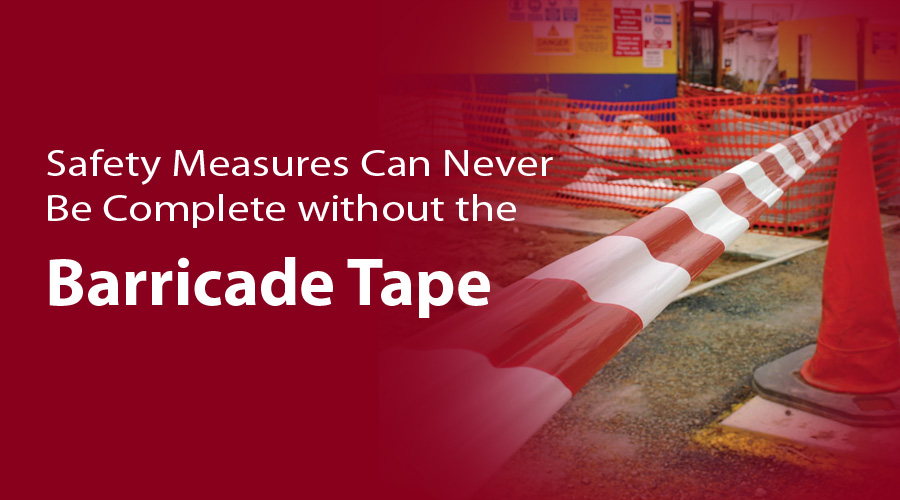
For safety experts, temporary, portable, and easy-to-erect obstacles like the Barricade Tapes are ideal.
This simple safety product creates a perimeter guard or barrier around a specified dangerous place. On this topic, let us get to know about comprehensive information and industry standards on Barricade Tape.
This term “caution tape” may be used to mention a wide variability of barrier messages, including those that don’t contain the words “caution” in the construction or safety sectors. When it comes to inline skates, Americans have become used to calling them “rollerblades” (or a number of other hyper-specific misnomers), and the same goes for Barrier Tapes of all kinds.
Barricade Tape Is Defined as Follows
It’s really more accurate to use the word “barricade tape” when discussing the subject matter that most people are talking about. Caution tape is the yellow polyethylene tape with a warning sign on it; however, “Barrier Tape” is any polyethylene tape used to build a barricade around a perimeter to increase safety, whether or not it has a warning message on it.
This is a valid assumption because “caution tape” is the most common kind of barricade tape, but it isn’t the only one. Barrier Tape often comes in one of two varieties:
Use of the Polyethylene Ribbon
Polyethylene barrier warning tapes may be used in a variety of ways. On the other hand, there are several exceptions. The following are some of the most often used Barrier Tapes:
Taping gas lines and other subsurface dangers to the ground might help locate them if they are accidentally dug up during excavation. “Non-detectable underground tape” is the name given to this kind of tape. In most cases, they’re made of polyethylene, like woven barricade tape, although they may be whatever color excavators find attractive. Messages like “Gas Line Below” may be seen on this sort of tape.
The bulk of these tapes are probably labeled “polyethylene,” but what does it really mean?
There are many uses for polyethylene, solid and flexible plastic with excellent ductility. Compared to other, more durable polymers, this one is more malleable and may stretch or twist without breaking based on the impact. Like Barrier Tape, it’s a standard option for industrial items.
The Barricade’s replacements
Even while polyethylene barricade tapes are excellent for crowd control and safety, a more solid barrier may be necessary for many instances. It is possible to use Barrier Tape to create a continuous barrier, but it is also quite easy to breach and merely serves as a visual deterrent.
Traffic cones
In the same way, Barrier Tape serves as a visible barrier in locations where access is forbidden, or care should be exercised. Simple traffic cones like these have the same function as barricade tape (see illustration).
For use with retractable belt barriers, these cone mounts are ideal
The retractable belt barrier with the cone mounts is designed to be affixed to the tops of traffic cones, as well as include retractable belts that can be protracted to create a barrier and link to additional cone mounts. Colors and sizes are available for the retractable belt barrier cone installations. Like barricade tapes, this kind of Barrier Tape may have preventive wording such as “Authorized Access Only” and “No Parking.”.
When Is Barricade Tape Necessary?
IDLH (immediately dangerous to life and health) situations need the usage of Barrier Tape to create a primary protective barrier around a known or potentially hazardous state. Perimeter identification is of utmost importance to workers, first responders, and members of the general public. While emergency circumstances may be prevented or restricted, it regulates traffic and pedestrian movement. Crowd control and marking off restricted areas are common uses for them on private land.
It’s best to use barricade tape solely as a short-term remedy. First responders use temporary barriers in most circumstances until more permanent barriers can be put up.
Various Colors Are Available in Barricade Tape
Many different types of Barrier Tape are available, each with a specific use in mind. In addition to the workers and the general public, these branded cassettes give further information. Because of this, they’re often used as a visual aid for printed text.
Using Barricade Tape Correctly
Decide on the kind of tape you’ll need. What color to choose depends on the situation. It’s designed to be used in places with no hazards or threats. The use of Barricade Tape should be considered where there is a possibility for danger or harm. Each color of Barrier Tape has a particular meaning and is used in a different context, such as yellow for Caution and red for Danger – Do Not Enter.
Red Tapes
‘Danger – Do Not Enter’ tape is used in instances when the restricted area provides moderate to high levels of safety and health dangers. It states, “Do not enter unless you have permission from the supervisor.” You may confront oversize or overhanging weights, fall protection, and restricted space entry in this condition.